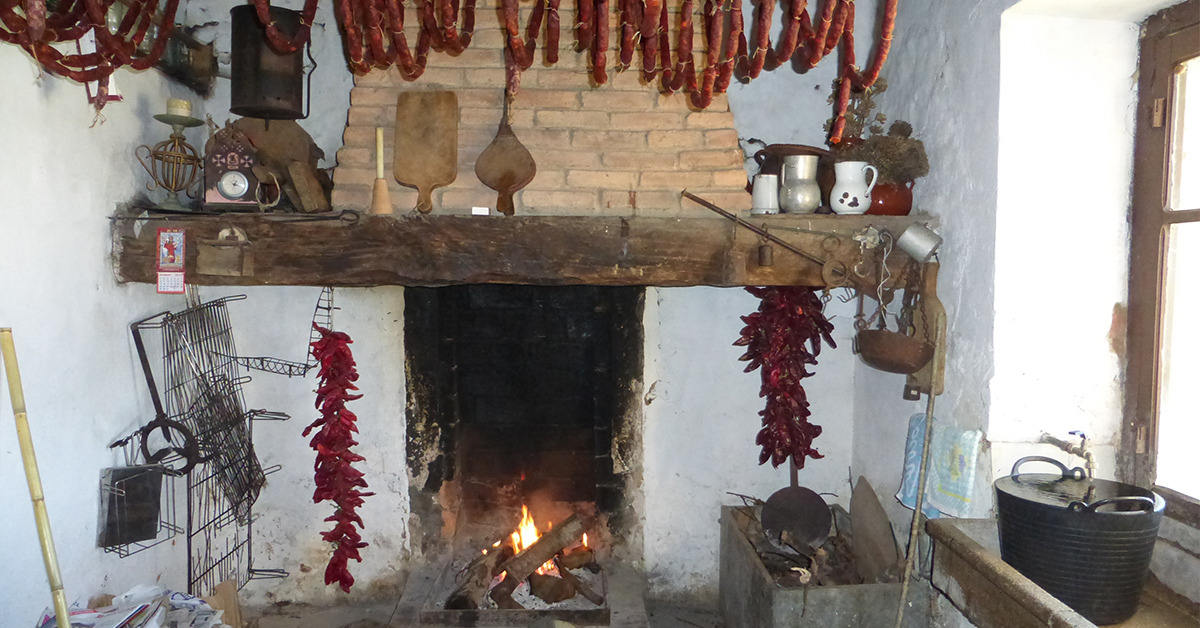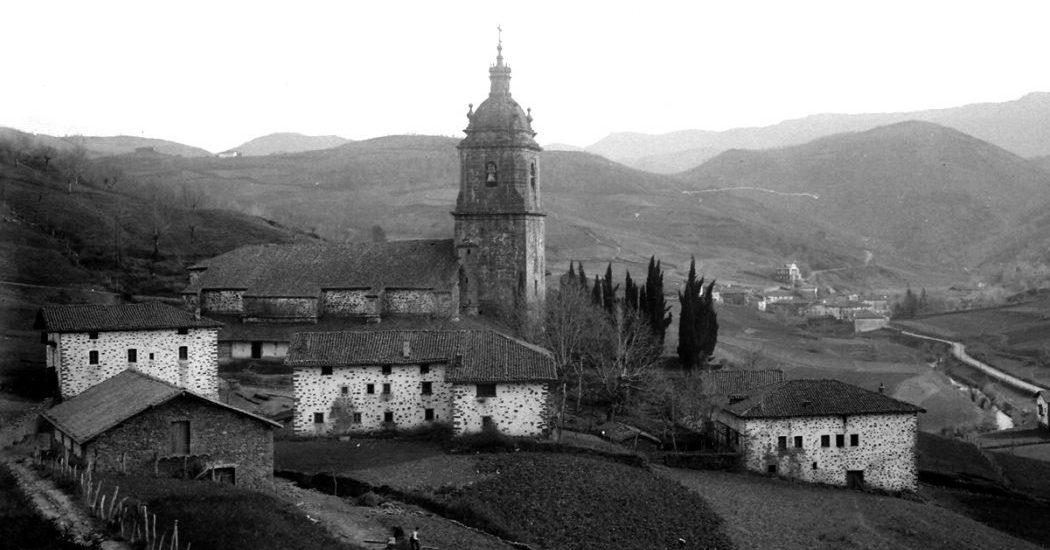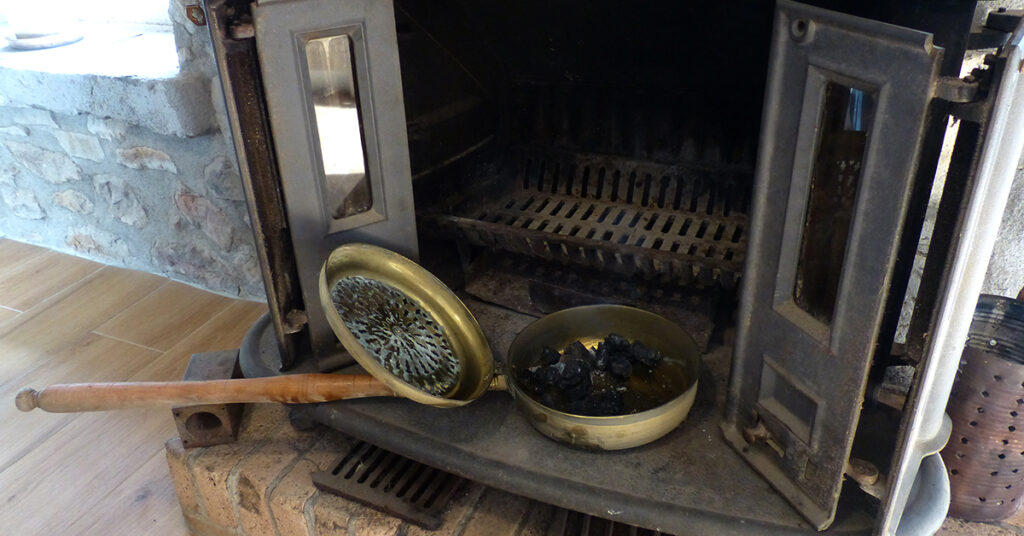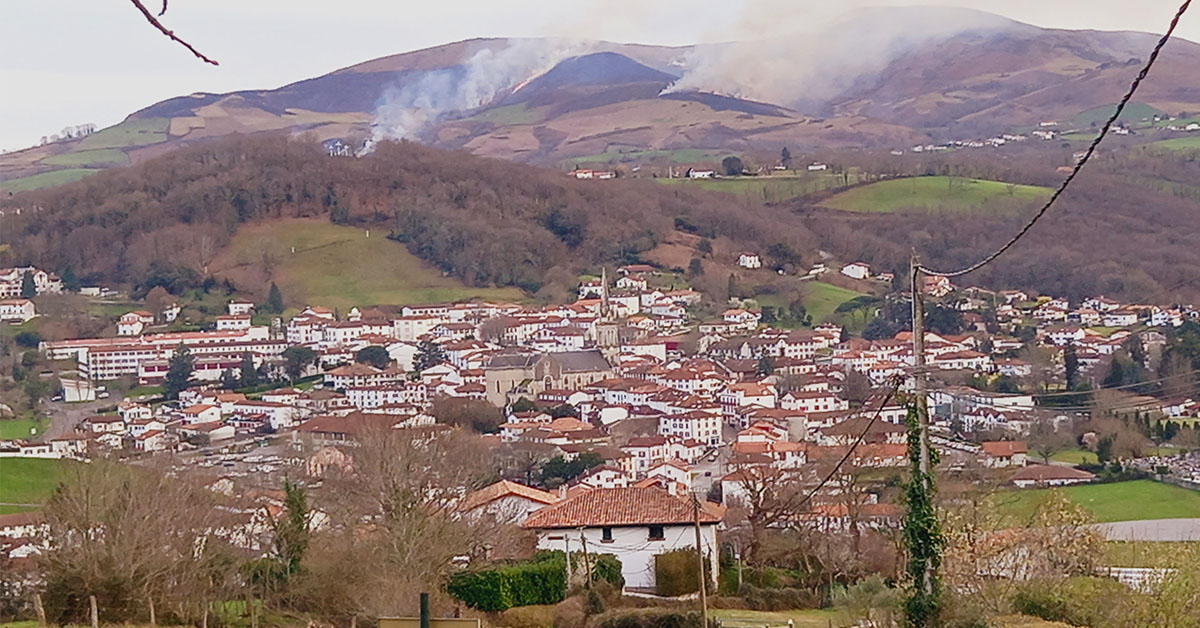Archives
The temperature and environmental conditions in our climate zone change with the seasons, and also each day, depending on whether the sun is shining or the phases of the moon. Our body cannot always adapt to those changes and needs the help of different systems to ensure our body temperature stays as constant as possible.
Fire is our main ally to overcome the cold. The hearth needs to be constantly stocked with wood to keep it alight during the long winter nights; something we cannot do while we are asleep. The kitchen (sukalde, fire zone) has always kept the areas near it warm; the problem is how to heat the rest of the house and the bedrooms can be very cold at night during the winter months.
Anybody who visits us in winter will see the uplands of Iparralde (Northern Basque Country) ablaze. The fires are used to manage and clear the pastures and meadows for the livestock. Given the small size of the farms in Iparralde, they need to graze their animals on the surrounding uplands. Accordingly, the farmers care for and attend to the uplands in the same way as they do with their farmsteads. In general, they use fire to clear those areas which cannot be reached with machines.

Traditional fireplace. Larrabetzu (Bizkaia), 2014. Photo credit: Akaitze Kamiruaga. Labayru Fundazioa Photographic Archive.
The kitchen —ezkaratza, as we know it in Gernika and environs— used to be and still is the heart of any home, a lit fire being the essential life-giving element within it, where food was cooked, for folks and animals, and where heat radiated from. Around the domestic fire, family scenes were commonplace, countless old stories were told, and knowledge would be passed on from generation to generation.
To build a traditional fireplace (beheko sua), a three-sided frame made of chestnut wood or oak heartwood was needed. Two parallel pieces of timber were nailed to the wall, a third joined them, and all three were underpinned, to prevent collapse. The firebox was built with brick and mortar, as are partition walls. The hearth, however, was made of cast iron —since wrought iron would bend— and mounted on a raised floor. Usually decorated with either religious or profane engravings, such as the Tree of Gernika, the firewall (txapea) was also made of cast iron, and in some cases of sandstone.

Zeanuri (Bizkaia), beginning of the 20th century. Felipe Manterola Collection. Labayru Fundazioa Photographic Archive.
St Mary’s Parish Church, Zeanuri (Bizkaia), is located in the neighbourhood of Eleizondo, and together with the hermitage of Compassion, the Cross by Nestor Barrenetxea and the cemetery, makes up an interesting monumental ensemble. The image of a hen gathering her chicks under her wing might help us visualize the complex.
The parish church is now completely restored and shelters one of the most remarkable altarpieces in Bizkaia. Throughout its long history the temple has experienced countless trials and tribulations, due principally to constant foundation problems, and had to be temporarily closed on more than one occasion, the most recent being in May 1994. Following major restoration, on 15 August 2000 it reopened for worship. (more…)







